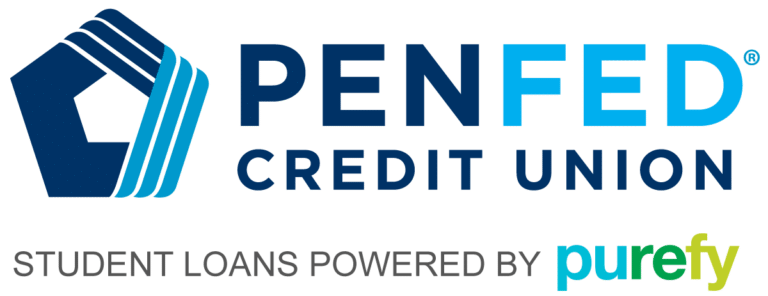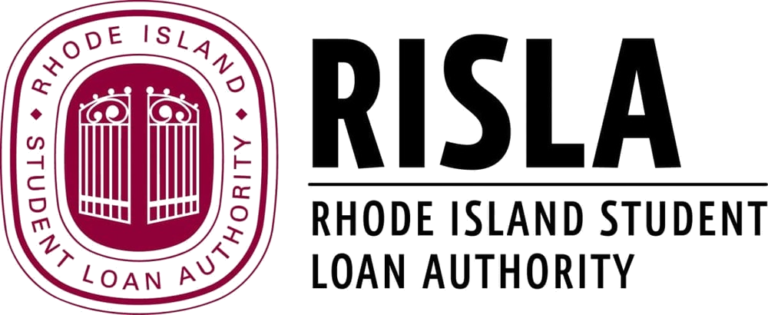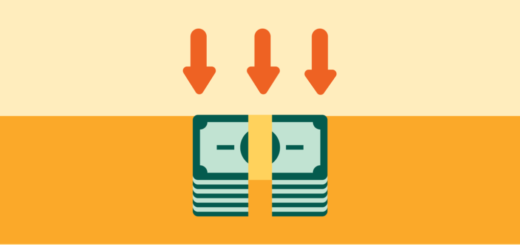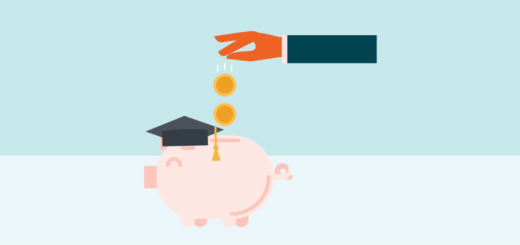Can’t Pay Your Student Loans? What You Need to Know
If you’re struggling to make your monthly student loan payments, you might be feeling overwhelmed and wondering what could happen if you can’t pay your student loans.
The consequences of defaulting on student loans can severely damage your credit, so it’s important to do everything in your power to continue making your student loan payments. Additionally, there are options available that might help you more easily manage your payments and get back on your feet.
Here’s what you should know if you can’t pay your student loans:
- If you can’t pay your federal student loans
- If you can’t pay your private student loans
- Defaulting on your student loans
- Frequently asked questions
If you can’t pay your federal student loans
There are several federal student loan repayment options available for borrowers in financial distress. If you can’t afford your federal student loan payments, here are a few strategies to consider:
1. Contact your loan servicer to discuss your options
Be sure to contact your loan servicer as soon as you think you might miss a student loan payment. This way, you can find out what assistance options are available to you.
Learn More: How to Get Student Loan Repayment Help
2. Change your repayment plan
Most federal student loans are automatically placed on the standard repayment plan, which comes with fixed monthly payments evenly spread out over 10 years. But there are also other repayment plans available that could help you lower your monthly payments, including:
- Graduated repayment plan: On this 10-year plan, your payments will start out low and increase every two years. This could be helpful if you expect your income to rise over time.
- Extended repayment plan: With this option, you can extend your repayment term up to 25 years, which could reduce your monthly payment. You can choose between an extended repayment plan with fixed monthly payments or an extended graduated repayment plan that starts with lower monthly payments that will increase every two years.
- Income-Based Repayment Plan (IBR): This is one of four income-driven repayment (IDR) plans available, which base your payments on your income. On the IBR plan, your payments will be 10% or 15% of your discretionary income, and you could have any remaining balance forgiven after 20 or 25 years — depending on when you took your loans out. Keep in mind that you must demonstrate financial hardship to be eligible for IBR.
- Pay As You Earn (PAYE): On the PAYE plan, your payments are 10% of your discretionary income, and you could have any remaining balance forgiven after 20 years. Like with IBR, you must demonstrate financial hardship to qualify for this IDR plan.
- Revised Pay As You Earn Repayment Plan (REPAYE): If you sign up for REPAYE, your payments will be 10% of your discretionary income. Additionally, any remaining balance could be forgiven after 20 or 25 years, depending on whether you took out your loans for undergraduate or graduate studies. Unlike with IBR and PAYE, you don’t need to show financial hardship to be eligible for this IDR plan.
- Income-Contingent Repayment Plan (ICR): Under this IDR plan, your payments will either be 20% of your discretionary income or the amount you’d pay on a 12-year, income-adjusted plan. Any remaining balance could be forgiven under ICR after 25 years. Keep in mind that ICR is also the only income-driven repayment plan available for Parent PLUS Loan borrowers — though you’ll have to consolidate your PLUS Loan into a Direct Consolidation Loan before you can sign up.
If you’re wondering how long it’ll take to pay off your student loans, enter your current loan information into the calculator below to find out. Use the slider to see how increasing your payments can change the payoff date.
Enter loan information
If you increase your payments by $ monthly on your $ loan at %, you will pay $ a month and pay off your loan by Jan 2021.
Does refinancing make sense for you?
Compare offers from top refinancing lenders to determine your actual savings.
Checking rates won’t affect your credit score.
Check Out: Fixed or Variable Student Loan: Which is Right for You?
3. Look into consolidation or refinancing
Another potential strategy is to consolidate or refinance your student loans. These terms are sometimes used interchangeably, but they mean something different for federal student loans.
- Federal student loan consolidation: You can consolidate your federal loans into a federal Direct Consolidation Loan. While you can’t change your interest rate this way, you can extend your repayment term up to 30 years, which could lower your monthly student loan payments. Just remember that extending your term means you’ll pay more in interest over time.
- Private student loan refinancing: You also have the option to refinance your federal student loans into a private loan — this process is also known as private student loan consolidation. Depending on your credit, this might get you a lower interest rate, which could save you money on interest and even help you pay off your loan faster. Or you could choose a longer repayment term to reduce your monthly student loan payment.
Additionally, you’ll no longer be eligible for benefits under the CARES Act, which has paused federal student loan payments and interest accrual due to the COVID-19 pandemic until Jan. 31, 2022. However, if you choose to federally consolidate your loans, you’ll still be eligible for these benefits.
If you decide to refinance your student loans, be sure to consider as many lenders as possible to find the right loan for you. Credible makes this easy — you can compare your prequalified rates from our partner lenders in the table below in two minutes.
| Lender | Fixed rates from (APR) | Variable rates from (APR) | Loan terms (years) | Loan amounts |
|---|---|---|---|---|

|
4.54%+ | N/A | 10, 15, 20 | $7,500 up to up to $200,000 (larger balances require special approval) |
|
||||

|
2.15%+ | 1.87%+ | 5, 7, 10, 15, 20 | $10,000 up to $250,000 (depending on degree) |
|
||||

|
2.39%+1 | 2.24%+1 | 5, 7, 10, 15, 20 | $10,000 to $500,000 (depending on degree and loan type) |
|
||||

|
2.99%+2 | 2.94%+2 | 5, 7, 10, 12, 15, 20 | $5,000 to $300,000 (depending on degree type) |
|
||||

|
2.16%+ | 2.11%+ | 5, 7, 10, 15, 20 | $5,000 to $500,000 |
|
||||

|
3.91%+5 | 1.80%+5 | 5, 10, 15, 20 | $1,000 to $250,000 |
|
||||

|
2.58%+3 | 2.39%+<sup3 | 5, 7, 10, 12, 15, 20 | Minimum of $15,000 |
|
||||

|
3.47%+4 | 2.42%+ | 5, 10, 15, 20 | $5,000 – $250,000 |
|
||||

|
2.74%+7 | N/A | 5, 7, 10, 12, 15, 20 | Up to $300,000 |
|
||||

|
3.05%+ | 3.05%+ | 7, 10, 15 | $10,000 up to the total amount of qualified education debt |
|
||||

|
2.89%+ | N/A | 5, 8, 12, 15 | $7,500 to $300,000 |
|
||||

|
3.29%+ | N/A | 5, 10, 15 | $7,500 up to $250,000 (depending on highest degree earned) |
|
||||

|
2.74%+6 | 2.25%6 | 5, 7, 10, 15, 20 | $5,000 up to the full balance of your qualified education loans |
|
||||
| Compare personalized rates from multiple lenders without affecting your credit score. 100% free!
|
||||
|
All APRs reflect autopay and loyalty discounts where available | 1Citizens Disclosures | 2College Ave Disclosures | 5EDvestinU Disclosures | 3 ELFI Disclosures | 4INvestEd Disclosures | 7ISL Education Lending Disclosures | 6SoFi Disclosures |
||||
4. Consider deferment or forbearance
Federal student loans come with access to federal deferment and forbearance options, which allow you to temporarily suspend your monthly payments. Here’s how they work:
- Student loan deferment lets eligible borrowers pause their payments for a period of time – generally six months to three years, depending on your situation. There are several circumstances that might qualify you for federal deferment, such as economic hardship, unemployment, or active-duty military service. Keep in mind that interest might continue to accrue on your loans during the deferment period, depending on the type of loans you have.
- Student loan forbearance is another way to pause your monthly payments. Unlike with deferment, interest always accrues during forbearance periods, which generally last up to 12 months at a time. There are two types of forbearance available for federal loans — general (or discretionary) forbearance granted by servicers on a case-by-case basis and mandatory forbearance provided under specific programs for military, AmeriCorps, or teachers, as well as in other limited circumstances.
Learn More: Federal Student Loans and COVID-19: What You Need to Know
5. Look into loan forgiveness
There are several student loan forgiveness programs available for federal student loans. Some of these include:
- Public Service Loan Forgiveness: If you work for a nonprofit or government organization and make qualifying payments for 10 years, you might be eligible for Public Service Loan Forgiveness.
- Income-driven repayment forgiveness: Borrowers who sign up for one of the four IDR plans could have any remaining balance forgiven after making payments for 20 to 25 years, depending on the plan.
- Closed school discharge: If your school closes while you are enrolled or within 120 days after you withdraw, you might be eligible to have 100% of your federal loans discharged.
- Total and permanent disability discharge: Borrowers who become totally and permanently disabled might qualify to have their federal student loans discharged.
- Dentists
- Doctors
- Lawyers
- Nurses
- Pharmacists
- Physicians assistants
- Teachers
Check Out: What Is a Student Loan Grace Period?
If you can’t pay your private student loans
While private student loans don’t provide federal benefits and protections, there are still some options available that could help you take control of your payments. Here are a couple of strategies to think about if you can’t pay your private student loans:
1. Contact your servicer as soon as possible
Unlike with federal loans, private loan benefits are offered at the discretion of the lender. For example, some private lenders provide deferment or forbearance options for borrowers facing financial hardship.
By getting in touch with your lender, you can discuss what assistance is available to you as well as how to apply for it.
Learn More: Best Student Refinance Companies: Reviewed and Rated
2. Refinance your private student loans
If you refinance your private student loans, you might be able to get a lower interest rate, which could help you pay off your student loans faster.
Or you could choose to extend your repayment term to reduce your monthly payments and lessen the strain on your budget — though remember that this means you’ll pay more in interest over time.
If you’re struggling to get approved, consider refinancing with a cosigner to improve your chances. Even if you don’t need a cosigner to qualify, having one could get you a lower interest rate than you’d get on your own.
You can use our calculator below to see how much you could save by refinancing your student loans.
Step 1. Enter your loan balance
Step 2. Enter current loan information
Step 3. Enter your new loan information to start calculating your savings
If you refinance your student loan at % interest rate, you can save will pay an additional $ monthly and pay off your loan by . The total cost of the new loan will be $.
Does refinancing make sense for you?
Compare offers from top refinancing lenders to determine your actual savings.
Checking rates won’t affect your credit score.
Check Out: How to Build Credit Fast
Defaulting on your student loans
A student loan is considered delinquent as soon as one payment is missed. This could lead to fees or penalties — as well as additional interest — that you’ll have to pay to bring your loan back into on-time status.
If you continue to miss your payments, your loan could end up in student loan default. Here’s what you can generally expect if you default on a federal or private student loan:
Federal student loan default
Most federal student loans will go into default when they’re 270 days past due. Keep in mind that if you have a federal Perkins Loan, it will default after missing just one payment. Some of the potential consequences of defaulting on a federal student loan include:
- Loan acceleration that makes your entire unpaid balance due immediately
- Loss of hardship benefits, including deferment and forbearance
- Garnishment of wages or withholding of federal tax returns
- Severe damage to your credit from the missed payments and the default status
- Loss of eligibility for additional federal financial aid
- Loan rehabilitation: This requires you to make payments for nine or 10 months, depending on the type of loan you have. If you successfully make these payments, the default status will be removed from your loan as well as from your credit history.
- Loan consolidation: Consolidating your federal student loans into a Direct Consolidation Loan is another way to get out of default. Keep in mind that you’ll either have to agree to repay your consolidated loan under an IDR plan, or you’ll have to make three consecutive, on-time, full monthly payments before you consolidate. Unlike rehabilitation, consolidation doesn’t remove the default from your credit history.
- Full repayment: You also have the option to fully repay your loan to get out of default. However, this isn’t a realistic option for most borrowers.
Learn More: 6 Ways Student Loans Can Impact Your Credit Score
Private student loan default
While the exact terms of private student loan default can vary by lender, most private student loans will enter default after 120 days of missed payments. Possible repercussions from private student loan default include:
- Loan acceleration that will make your entire loan balance immediately due
- Major damage to your credit (and your cosigner’s credit) from the missed payments as well as from the default status
- Lawsuit and collection fees if your lender decides to take you to court
- Wage garnishment if your lender wins a judgment
Keep in mind that many private lenders will charge off loans after payments have been missed for 120 days. If this happens, the lender won’t offer you any help to get your loan out of default — so be sure to contact your lender before this time passes.
Check Out: Defaulted Student Loans: Can You Refinance?
Frequently asked questions
If you’re having trouble paying your student loans, here are the answers to several questions you might have:
Do student loans go away after 7 years?
No, neither federal nor private student loans go away after seven years. If you have federal student loans, you might be eligible for one of the federal forgiveness programs — these can take anywhere from five to 25 years to have some or all of your loans forgiven.
Unfortunately, private student loans aren’t eligible for student loan forgiveness. You might be able to reduce your repayment time on private student loans if you can get a lower interest rate through refinancing or if you make extra payments — but you’ll still have to repay the total amount you borrowed in either case.
Learn More: Best Lenders to Refinance Student Loans for Low-Income Earners
Is it illegal to not pay student loans?
Failing to pay your student loans is considered a civil matter, which means that you can’t be arrested or face jail time for defaulting on either federal or private student loans.
However, both federal loan servicers and private lenders have multiple avenues available to them for collecting past-due debt from you. For example, you could have your wages garnished or be sent to collections.
Check Out: When to Refinance Student Loans
Can they take your house if you don’t pay your student loans?
Generally, no. But if you have federal or private student loans and are taken to court, you could have a judgment lien placed on your home. This means you won’t be able to take out a new mortgage, refinance an existing mortgage, or sell your home until you’ve paid off the lien.
Learn More: Can You Pay Your Student Loans With a Credit Card?
Do student loans go away when you die?
This depends on the type of student loans you have.
- Federal student loans are discharged when the borrower passes away. That means your debt won’t be passed to your next of kin, and your estate won’t be responsible for paying it back. Keep in mind that Parent PLUS Loans can be discharged if the student who benefitted from the loan passes away.
- Private student loans might be discharged when the borrower passes away, depending on the lender. If not, the lender will generally try to collect the debt from your estate. If there’s no estate, the lender will likely turn to your cosigner (if you have one), then possibly to your spouse (if you live in a community property state).
Check Out: Can You Refinance a Student Loan to a 30-Year Term?
What happens if you don’t earn enough to pay back your student loan?
Borrowers who don’t earn enough to make their agreed-upon student loan payments should contact their servicer or lender to see what assistance options are available.
- If you have federal student loans, consider signing up for an IDR plan to have payments based on your income. Depending on how much you earn, your payments on an IDR plan could be as low as $0. Your servicer can also help you look into deferment, forbearance, or student loan forgiveness programs.
- If you have private student loans, you might be able to take advantage of deferment or forbearance options, depending on the lender. Another strategy is to refinance your student loans and choose a longer repayment term to reduce your monthly payments — though this means you’ll pay more in interest over the life of your loan.
Learn More: Lenders That Will Refinance Student Loans for Non-Graduates
What is an economic hardship deferment for student loans?
If you have federal student loans and are struggling to make your payments, you might be eligible for an economic hardship deferment. With this type of deferment, you can pause your payments for up to three years.
Keep in mind that interest might continue during the deferment period, depending on the type of loan you have.
There are four ways to qualify for a federal economic hardship deferment:
- You previously qualified for economic deferment under another federal program.
- You’re receiving federal or state public assistance benefits.
- You’re serving as a volunteer in the Peace Corps.
- You work full time and earn less than the federal minimum wage or 150% of your state’s poverty line.
Check Out: How Often Can You Refinance Student Loans?
What will happen if I can’t pay my student loans and I own no assets?
Even if you own no assets, you can still suffer financial consequences for not paying your student loans and ending up in default.
For example, you could have your wages garnished, be sent to collections, or be taken to court. Your credit will also be severely damaged, which could impact your ability to access other credit in the future.
If you decide to refinance your student loans, remember to consider as many lenders as possible to find the right loan for your needs. This is easy with Credible: You can compare your prequalified rates from multiple lenders in two minutes — without affecting your credit.
See Your Refinancing Options
Credible is 100% free!
The post Can’t Pay Your Student Loans? What You Need to Know appeared first on Credible.









